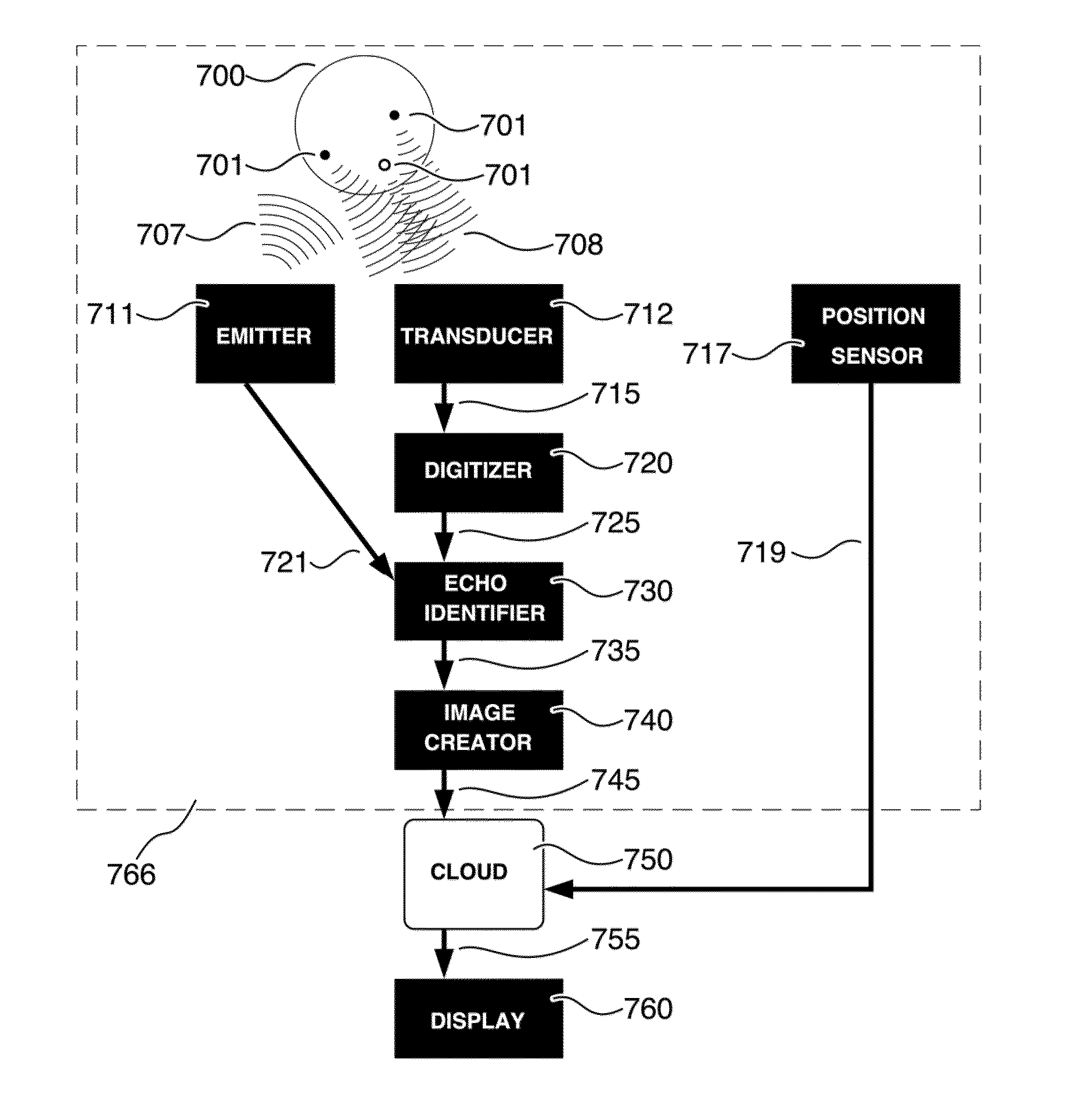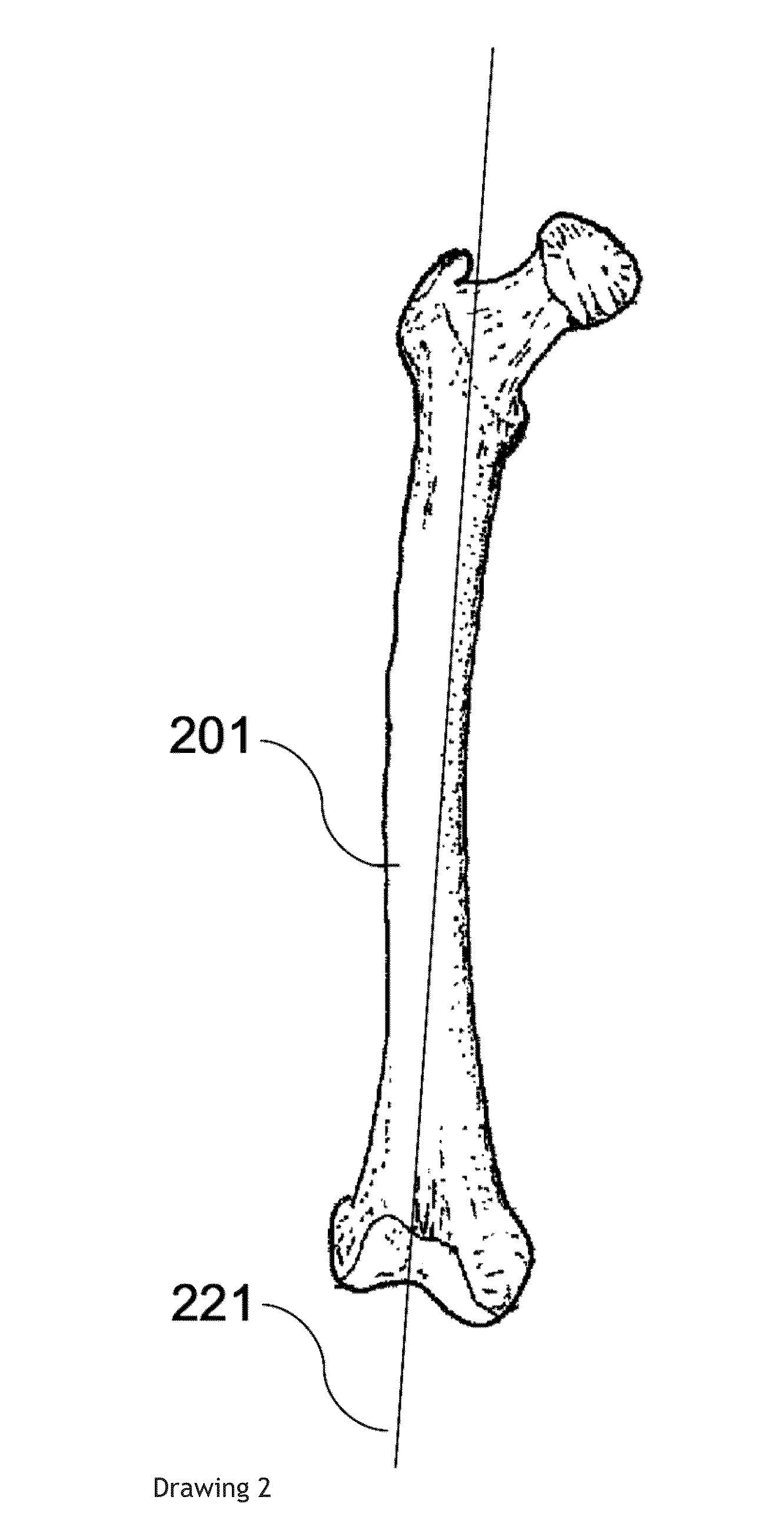Apparatus and method for distributed ultrasound diagnostics
a distributed ultrasound and diagnostic method technology, applied in the field of ultrasound non-invasive imaging, can solve the problems of lack of well trained personnel in the field, limited and costly resources of experts, and inability to use such algorithms
- Summary
- Abstract
- Description
- Claims
- Application Information
AI Technical Summary
Benefits of technology
Problems solved by technology
Method used
Image
Examples
first embodiment
[0071]Alternatively, the invention may use a holographic display system, emitting a different view at every angle (not just at a small set of angles, like a lens-based autostereoscopic system). Holography is claimed to be used in the HoloVizio™ system manufactured by Holografika in Budapest, Hungary, perhaps in the manner disclosed in U.S. Pat. No. 5,801,761, Method and apparatus for displaying three-dimensional images, to Tibor Balogh, 1998. A real-time system for holographic display to a limited number of tracked eyes has recently become available from SeeReal Technologies S.A., of Luxembourg. We mention this approach here for thoroughness, though it is unlikely that holography would be cost-effective for the present invention.
[0072]Alternatively, the invention may use the ‘anaglyph’ system with a different color filter for each eye (often red and blue) first described in 1853 by Wilhelm Rollmann, “Zwei neue stereoskopische Methoden,” Annalen der Physik 166: 186-187. The anaglyph ...
PUM
 Login to View More
Login to View More Abstract
Description
Claims
Application Information
 Login to View More
Login to View More - R&D
- Intellectual Property
- Life Sciences
- Materials
- Tech Scout
- Unparalleled Data Quality
- Higher Quality Content
- 60% Fewer Hallucinations
Browse by: Latest US Patents, China's latest patents, Technical Efficacy Thesaurus, Application Domain, Technology Topic, Popular Technical Reports.
© 2025 PatSnap. All rights reserved.Legal|Privacy policy|Modern Slavery Act Transparency Statement|Sitemap|About US| Contact US: help@patsnap.com



